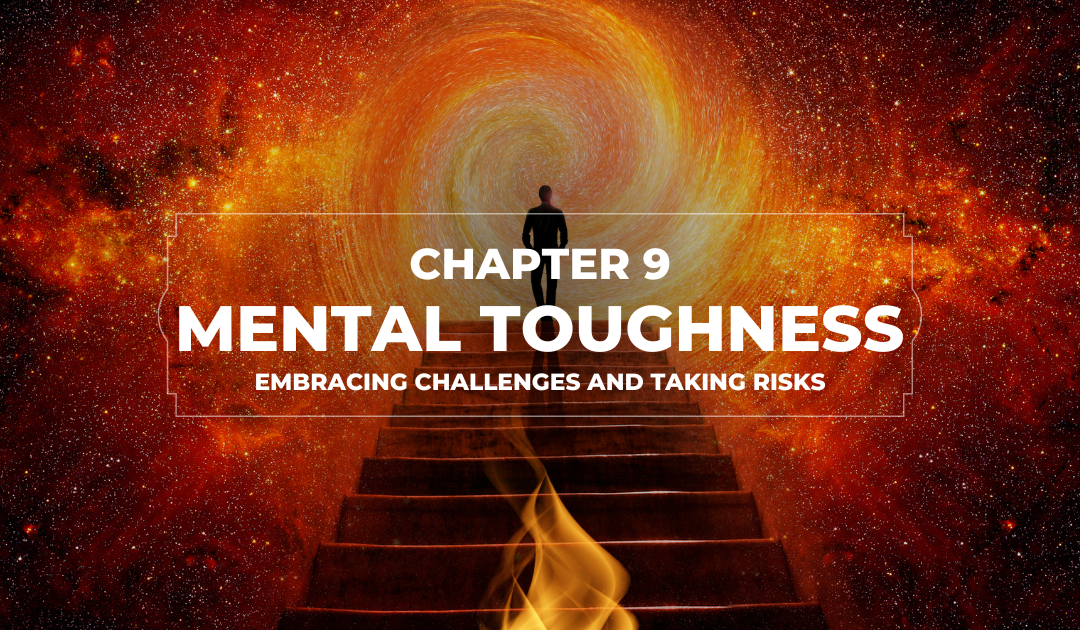In this chapter, we will explore the importance of embracing challenges and taking risks, and how they relate to mental toughness. We will discuss the benefits of stepping outside of one’s comfort zone, and provide practical tools and techniques for embracing challenges and taking calculated risks.
Embracing challenges and taking risks are important components of mental toughness that can help individuals achieve their goals and reach their full potential. They involve stepping outside of one’s comfort zone, facing new and unfamiliar situations, and taking calculated risks to achieve success. In this chapter, we will explore the importance of embracing challenges and taking risks, and how they relate to mental toughness. We will discuss the benefits of stepping outside of your comfort zone, and provide practical tools and techniques for embracing challenges and taking calculated risks.
Stepping outside of your comfort zone is critical for developing mental toughness, as it can help individuals build resilience, creativity, and problem-solving skills. It involves taking risks and facing challenges that may be uncomfortable or unfamiliar, but ultimately lead to growth and development.
Jocko Willink, a retired Navy SEAL and leadership expert, shares valuable insights about stepping outside of your comfort zone, often in the context of discipline and personal growth. His perspective on stepping outside of your comfort zone centers on embracing discomfort, practicing discipline, taking ownership, and using adversity as a catalyst for personal and professional growth. He sees these principles as essential for achieving success, both as an individual and as part of a team.
Here are some key points he often makes:
- Embrace Discomfort: Jocko is a firm believer in embracing discomfort as a path to growth. He often says, “Get comfortable being uncomfortable.” He believes that true progress occurs when you willingly put yourself in challenging situations and face adversity head-on.
- Discipline Equals Freedom: Jocko’s mantra is “Discipline equals freedom.” He argues that by disciplining yourself to do the things you don’t necessarily want to do, you gain the freedom to achieve your goals and live life on your terms. Stepping outside your comfort zone is a fundamental aspect of this discipline.
- Ownership of Actions: Willink emphasizes taking full ownership of your actions and decisions. When you step outside your comfort zone, you take control of your destiny and accept responsibility for the outcomes, whether they are positive or negative.
- Resilience Through Adversity: Jocko believes that facing discomfort and adversity builds resilience. It toughens you mentally and emotionally, making you better equipped to handle life’s challenges. He often cites his experiences in combat as lessons in resilience and adaptability.
- Growth Through Challenge: Stepping outside of your comfort zone is, in Willink’s view, a surefire way to foster personal and professional growth. He encourages individuals to seek challenges, set ambitious goals, and consistently push their limits.
- Leadership and Teamwork: Jocko also extends these principles to leadership and teamwork. He believes that effective leaders and high-performing teams are those that are willing to step outside their comfort zones, take calculated risks, and adapt to changing circumstances.
David Goggins, a former Navy SEAL and ultramarathon runner, is known for his inspirational and motivational views on stepping outside of your comfort zone. He emphasizes that this is not only a path to personal growth and self-discovery but also a way to build mental toughness and break through self-imposed limits. He encourages individuals to embrace discomfort as a means to unlock their full potential and achieve their goals.
He often emphasizes the following key points:
- Embrace Discomfort: Goggins believes that true growth and self-discovery happen when you step outside of your comfort zone. He encourages individuals to embrace discomfort, as it’s in those challenging moments that you find your true potential.
- Break Your Limits: Goggins challenges the idea of setting limits on what you can achieve. He often says, “We live in an external world, everything, you have to see it, touch it. If you’re very limited to the external world, the external world is going to control you.” He encourages people to break through self-imposed limitations and explore their full potential.
- Stay Committed: Goggins advocates for unwavering commitment to your goals, even when faced with discomfort or adversity. He believes that consistency in pushing your boundaries is the key to long-term success.
- Self-Discovery: Stepping outside of your comfort zone is a journey of self-discovery. Goggins often talks about finding out who you truly are when you’re faced with challenges. It’s an opportunity to learn about your strengths, weaknesses, and what you’re capable of achieving.
Here are some practical tips for embracing challenges and taking calculated risks:
Identify your fears: Identify the fears and limiting beliefs that are holding you back from taking risks and embracing challenges. Challenge these fears and beliefs by focusing on the potential benefits of taking action.
Start small: Start by taking small steps outside of your comfort zone, such as trying a new activity or meeting new people. Gradually increase the level of challenge as you become more comfortable.
Seek support: Seek support from others who can provide encouragement and guidance. Join a group or community of like-minded individuals who share your goals and values.
Learn from failure: Embrace failure as a learning opportunity and use it to build resilience and develop new skills. Reframe failures as opportunities to grow and improve.
Take calculated risks: Take risks that are calculated and have the potential to lead to growth and development. Weigh the potential benefits and risks before taking action.
Embracing challenges and taking risks are essential components of mental toughness that can help individuals achieve their goals and reach their full potential. By identifying fears, starting small, seeking support, learning from failure, and taking calculated risks, individuals can develop the courage and resilience needed to succeed.

